At a special event at Brat x Climpson’s Arch, the Brewers Association emphasized that combining fermented foods with craft beer has great potential.
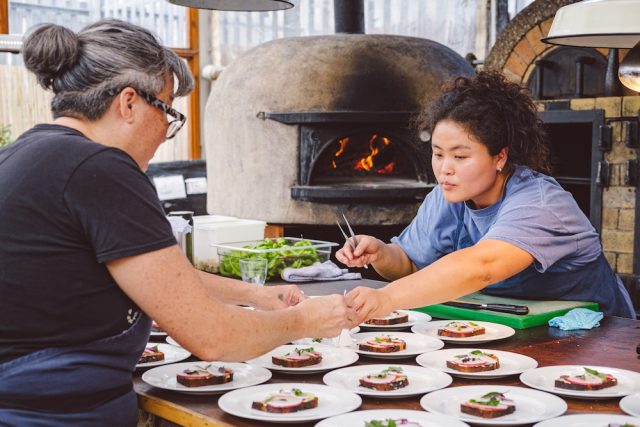
Fermented foods and beer from fermentation? An obvious combination, but also an incredibly delicious one. This event hosted by the Brewers Association, a nonprofit trade association of small and independent American craft breweries, aimed to explore the combination potential between fermented foods and American craft beer. And it certainly provided a proof of concept.
The experience brought together two chefs from Michelin-starred restaurants, including Song So Kim of Super 8 restaurants in London and Mara King of Id Est Hospitality in Boulder, Colorado. Both chefs are recognized experts in fermentation, as the menu certainly demonstrated, and their extensive knowledge was evident throughout the event as they detailed each element of the dishes.
They were joined by Adam Dulye, the Brewers Association’s executive chef and himself a world-leading expert on beer and food pairing. At the start of the event, Duyle said the menu was a “meeting of the restaurant groups” and part of their “incredibly extensive fermentation programs.”
Resurgence
Mara added that there has been a “resurgence of fermentation in restaurant culture” recently. She said the way to create “novel ingredients” is to “make them yourself.” Speaking about her work in Colorado, she said a short growing season from May to October is supplemented with fermentation so that restaurants can use their produce in the winter, like cherries.
Plus, she said, you reduce waste by using something that is “destined for the trash as an ingredient.” Using bread as an example, she said you can use koji, the fungus used in sake, to turn bread into an umami sauce.
Song So Kim added that fermentation is a “really great way to connect with farmers” and “use the knowledge of our ancestors” to build a bridge from the field to the table.
Menu
The menu consists of courses that are combined with different types of beer, each of which addresses fermentation in a different way.
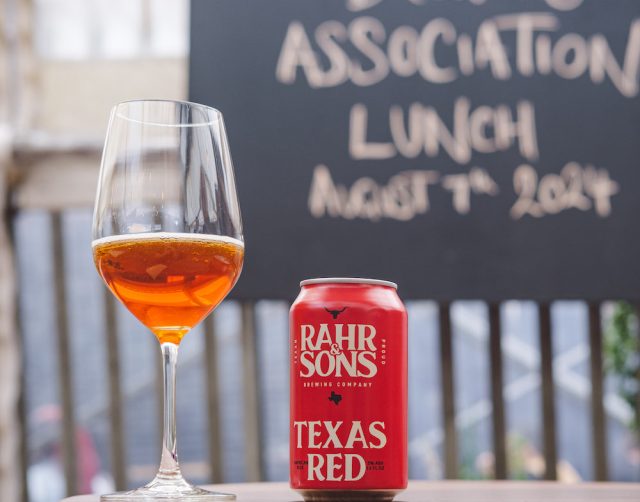
Upon arrival, guests were given a Texas Red from Rahr & Sons Brewing Co. This beer had a medium body and a light to medium mouthfeel with notes of caramel and sweet roasted malt with a smooth finish.
Fritz Rahr, President and CEO, said db that the brewery specializes in lighter varieties and the 5% ABV beer should be drinkable with a malt-focused profile and some hops. With a light biscuit flavor, it was ideal as an aperitif.
Amuse Bouche
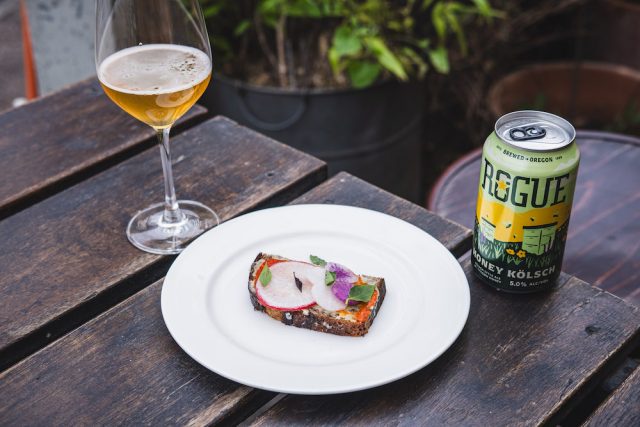
The first course of the meal, an amuse-bouche, consisted of a Rogue Brewery Honey Kölsch, brewed with small amounts of wildflower honey, producing subtle floral notes.
This was served with bread and butter, radish and Fresno Sriracha. The Sriracha was produced over a fermentation period of about 7 days and contained the key
Elements of this fermented sauce: hot (Fresno chili), sweet (sugar), salty (salt and radish) and spicy (fermentation).
Reid Bearisto, international manager of Rogue Ales brewery, said the beer “cleanses” the palate with its classic top-fermented Kölsch style, making it an ideal partner for the bread dish.
beef
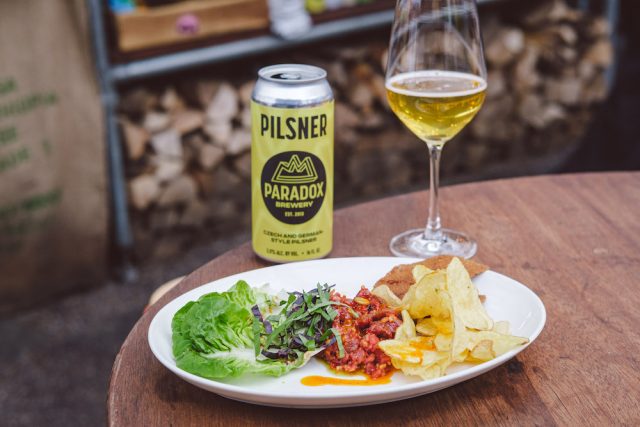
For the first course, Paradox Pils created a “golden, crisp and drinkable pilsner” with old world pilsner malt and fine hops, which was served with beef tartare, sourdough gochuchang, new potato chips and cured egg yolk.
Leftover sourdough bread was fermented into a gochuchang paste, similar to miso, with bold umami flavor and subtle spice. The beer paired beautifully. Much like the Kölsch, the Pilsner offered a mouth-cleansing clarity and, as Devon Hamilton of Paradox Brewery said, it matched the “richness of the beef tartare and cleansed the mouth pleasantly.”
Fish
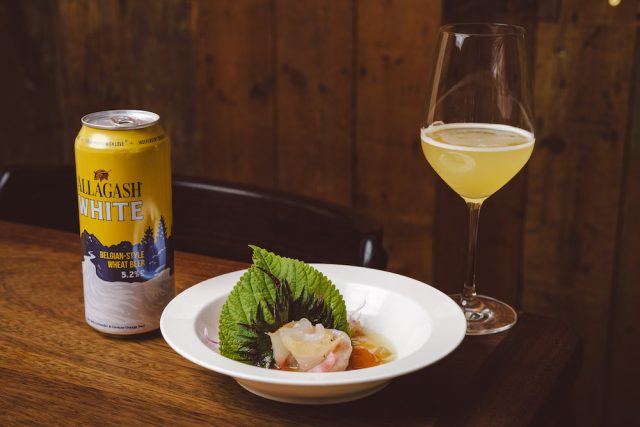
The fish course was accompanied by Allagash White, a Belgian witbier brewed with oats, malted wheat and unmalted raw wheat, seasoned with coriander and orange peel from Curacao. Kevin Stoneroad of Allagash Brewing Co. explained that the brewery was one of the first in the region to have a coolship, the traditional Belgian method of spontaneous fermentation in which hot, unfermented wort is cooled overnight in a traditional, large, flat pan called a “coolship” at outside air temperature.
During the cooling process, the beer is inoculated with naturally occurring microorganisms from the air and in the morning it is transferred to French oak wine barrels, where the entire fermentation and maturation (over 1-3 years) takes place.
The beer paired with konbu-cured fish with fresh and aged daikon radish with brodo and apricot kosho. The dish showcased the bold plant and herb flavors with the brine from seawater. Brodo has a stronger flavor than broth but clear notes, an “enriched broth,” while kosho is a fermented sauce made from chilies and in this case apricots instead of the traditional yuzu.
The taste was more dominated by stone fruit than by citrus fruits, which are the focus of this combination.
Dove
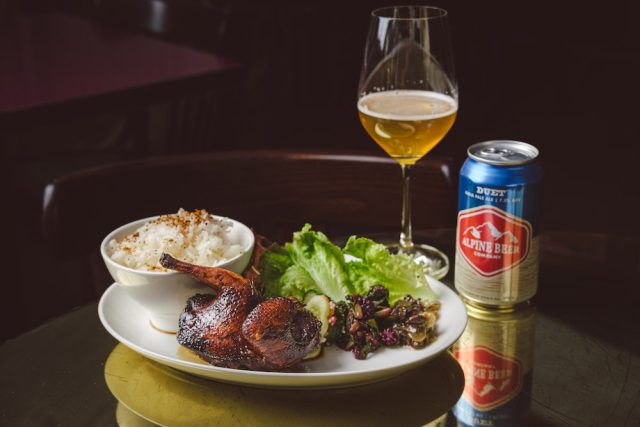
For the larger, game-focused pigeon dish, there was an Alpine Duet, a West Coast-style single IPA brewed with Simcoe and Amarillo hops, with squab – a young pigeon – and rice and cucumbers, house-made Worcestershire sauce and rice from Koda Farms.
Koda Farms rice comes from a small, family-run farm in California that is arguably one of the best rice producers in the world. Each harvest takes six years from seed to drying. The squash was dry rubbed, deep fried, rubbed again, filled with herbs and finished baking in Brat’s wood-fired oven.
Served over rice with pickles, it cleansed the palate along with the beer. Josh Daniels, owner of Alpine Beer Tilray Brands, said the beer “paired well with the Dis,” with cleansing citrus and floral notes contrasting with the richness of the pigeon and fermented pickles.
Dessert
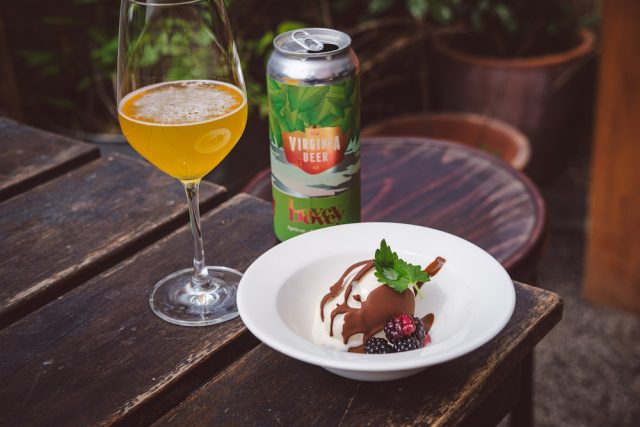
Dessert was a truly fermented combination of food and beer, consisting of an amazake ice cream with artificial chocolate and fruit, with the WinWin chocolate made from used
Brewer’s yeast.
Amazake is a Japanese drink made from rice and koji, made using essentially the same process as miso or mirin. Koji produces enzymes that break down the starch into sugars and carbohydrates. If you leave it for a few days, lactic acid bacteria start to turn it sour, then they eventually break down the sugars into alcohol, and if you leave it even longer, you end up with sake.
Win Win chocolate is the first sustainable chocolate without cocoa. It is made from barley, oats and carob by fermenting the grains and legumes and then roasting and grinding them like cocoa beans. The product can be used 1:1 for chocolate in recipes. In this case, the chocolate was mixed with spent brewer’s yeast.
This went well with Lovey Dove from Virgina Beer Co., a sour stone fruit beer with peach, apricot and mango flavors.
Addition
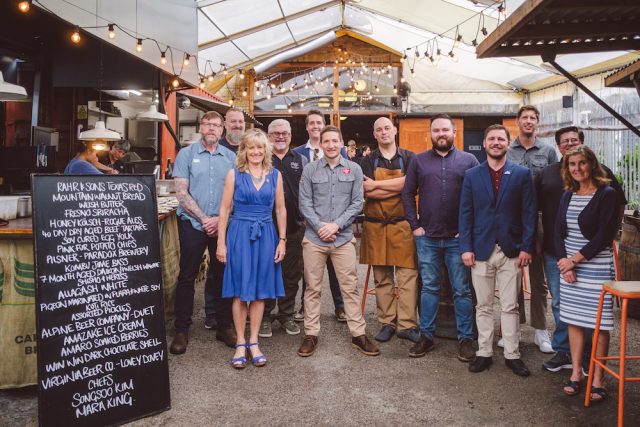
In conclusion, the event made it clear that there is considerable potential to combine fermented foods with a wide range of different beers and that the products can complement each other in interesting and unexpected ways.
Adam Dulye, executive chef of the Brewers Association, said: “The menu draws on fermentation techniques and ingredients from across the restaurants, bringing together fermented flavors to show how they can complement and enhance the flavors of American craft beers.”
The flavor highlights of fermentation were explored, from spicy to salty, sweet to sour, and all the way to the ultimate byproduct of fermentation, alcohol. The flavors of each dish are matched to the respective American craft beer, culminating with the pigeon meat and ending gently with a slightly sour beer and ice cream.”
Lotte Peplow, American Craft Beer Ambassador for Europe for the Brewers Association, added: “Fermentation is a natural process in which microorganisms (such as yeast) convert carbohydrates into alcohol or acids. This is how beer is brewed and foods develop a distinctive acidity.”
“It therefore makes sense that beer and fermented foods go well together, as beer adds hop bitterness and flavor to the tangy acidity of fermented foods.
Groceries.”
“The Brewers Association effectively showcases this concept with a unique, innovative approach that combines American craft beer with fermented foods. The combinations are designed to show guests the endless possibilities of beer and food pairing and to show the industry why beer deserves a prominent place on the dinner table.”
All images provided by Brewers Association/Nic Crilly Hargrave
More news
Bob Pease, CEO of the Brewers Association, retires
The 50 best breweries in the USA
British market described as “extremely important” for US craft beer sector

